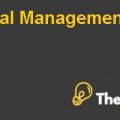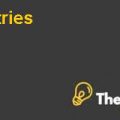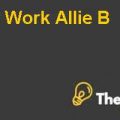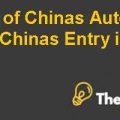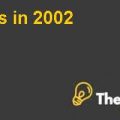American Chemical Corporation Case Solution
Case Overview
American Chemical Corporation (ACC) is a well-known US based chemical manufacturing company. The firm is one of the most diversified chemical companies in the US. Its major competitors include: Allied Chemical, Dow Chemical, Union Carbide, Monsanto, Dupont etc., all these are the US based chemical companies. The firm owns a Sodium Chlorate plant in Collinsville, Alabama with a total capacity of 40000 tons. In October 1979, management at ACC is considering to sell its Collinsville plant in regards of the commitment held to acquire shares of Universal Paper. In this regards, the firm has received a purchase offer from the Dixon Corporation which is a US based specialty chemicals firm. Dixon has agreed to purchase the net assets of the Collinsville plant from American for $12 million after extensive discussions, after the approval the problem is that Dixon has issued the pro forma financial statements without including the future profitability of non-laminated graphite and Electrodes and it also hasn’t mentioned the operating economies. Dixon has assumed that the prices of Sodium chloride will increase by 8%.
The report contains the determination of free cash flows,discounted cash flows along with the NPV. It also contains the evaluation of the proposal based on the market value of assets and the $12 million offer price. The final recommendations are based on the required return on investment of 15%, which implies that if the offered price of $12 million is more than or equals to the market value of the Collinsville plant assets then the management at ACC should accept the offer.
The Dixon Corporation, a specialty chemicals firm, was approached as one of the potential buyers. Dixon has agreed to purchase the net assets of the Collinsville plant from American for $12 million after extensive discussions, subject to board approval but the problem is that Dixon has issued the pro forma financial statements without including Laminate project.
This project report will consider the Investment of the Collinsville plant, in which Dixon and American corporation relationship. In this case, we have calculated the Cash flow Projections with the traditional method, and Cash flow projections with the new lamination technology and overall projects financial analysis. Further, this report will provide recommendations for the project to be a viable option for Dixon Corporation or not?
Critical Analysis
Investment in the Collinsville Plant
Free Cash Flows Generated
The cash flow projections of Collinsville will be provided now, as the Cost of Capital has been estimated. The Cash flow projections would relate that the project to be taken is beneficial in the current form of using the traditional technology, or the adding up of the new technology of Lamination with further capital costs will be more beneficial. The Cash flow will provide a Net Present Value which would provide the answer in the form of Cash flows after consideration of all the parts.
Without Laminate Technology
When we consider the without laminate technology for the investment in the Collinsville Plant. The $ 12 Million investment would provide a negative present value of $ (1499) Million. This means that the returns being considered here, are negative inconsideration to the investment in the plant, even after 10 years of growth being considered.(See Appendix 1)
With Laminate Technology
The next part was the considerance of the Lamination technology, which will be a further cost burden of approximately of $ 2 Million and more of investment. The Net Present Value after the lamination is a further positive of $ 3563.(See Appendix 2)
Evaluation of Investment for Dixon
Quantitative Analysis: NPV Generated by Dixon at 16% (Key Findings)
For the Quantitative analysis of the project, NPV is calculated as though, the amounts have already been provided by the case study, our model is differentiated and highly computational; providing the exact requirements and the position of the Collinsville Plant for the Dixon Corporation. Reduced Power Cost after implementation of Laminate in Dec 1980. With the calculation of average reduction in power cost after laminate 18% and power cost which were given by Dixon in the case study; we have found the depreciation by cost of laminate divided by estimated life the depreciation per year calculated. Afterwards current depreciation of laminate added in previous depreciation year laminate the accumulated depreciation has computed. Cost of laminate subtracting accumulated depreciation to find out book value after these calculation the total depreciation is calculating by adding depreciation of laminate with depreciation of Dixon. Net operating profit after tax be calculated by operating profit multiply with tax rate by subtracting 1.............................
This is just a sample partial case solution. Please place the order on the website to order your own originally done case solution.


